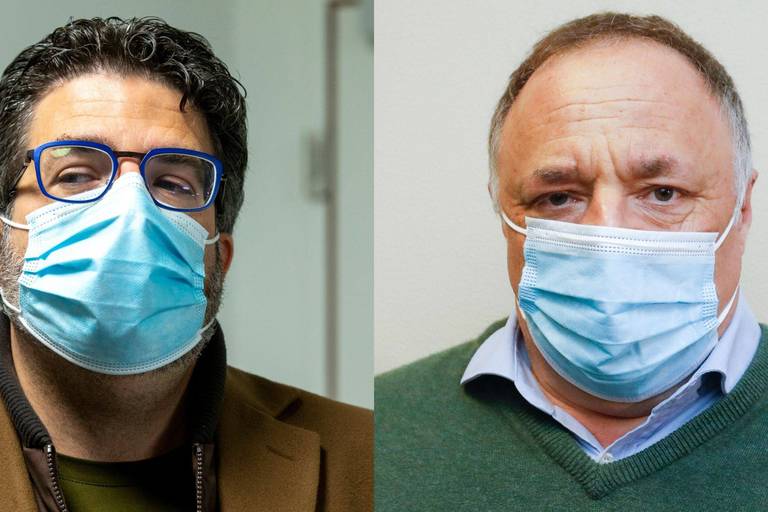The decrease of several coronavirus figures in Belgium has started slowing down and the number of new hospitalisations has even increased a little, but experts say that there is no reason to worry yet.
The average number of hospital admissions per day has increased slightly, by 3%, compared to a week earlier, and the other figures that were falling sharply are now falling only slightly, virologist Marc Van Ranst told Het Laatste Nieuws.
"I expect that we will soon reach a plateau, and will then see a rise again," he said "For March 7, we will end up somewhere around 8,000 new infections, while the weekly average is now 6,181."
Even though Belgium already moved into 'code yellow' on Monday, the country is still registering 143 hospitalisations per day, instead of the maximum of 65 admissions that was one of the conditions for the switch.
"We will not get to that threshold of 65 right away," Van Ranst said. "But the number of deaths is still dropping and the number of people in intensive care is now even below 200."
Lifted measures and carnival break
He added that the "less favourable evolution" seen in the figures now is due to the lifting of the measures – a process that happened in two stages. "In the second half of February, we already had a wave of easing, and now again. This combined with the skiing holidays and other activities during the carnival break means that the epidemic is picking up again."
However, he remains "in full support of the relaxations," referring to a similar increase that was seen in Denmark after it abandoned all measures. Additionally, the upcoming warmer weather will likely also help with the Covid-19 figures.
"In other years, this is also a top season for colds and for the flu, which is also on the rise in Europe, by the way. Not a big rise, because it is already late in the season. But with the Easter holidays, those flu viruses go away," Van Ranst said. "This is no different from many other years at this time of year."
He does expect a succession of smaller waves in the future, like the fifth wave Belgium has known. "The measures are gone, but the virus is not," he stressed, adding that those smaller waves will not have the same impact on the healthcare system as before.
Related News
- CST and face masks: These rules change
- Belgium switches to code yellow from Monday
- No more PLF: Belgium changes travel rules from 11 March
Van Ranst also emphasised that considering a return to 'code orange' now that the hospitalisations started increasing a bit is "completely premature," adding that "that will only happen if the pressure on healthcare becomes so high that we cannot catch up with the delayed care."
Virologist Steven Van Gucht is not alarmed by the increase in the reproduction rate either, he told the Belga News Agency on Tuesday afternoon.
The fact that the reproduction number has again reached 1 is a logical consequence of last month's easing, but Van Gucht does not expect major problems from the increase. "The examples from other countries (like Denmark) also reassure me that this will probably not be too bad."
Before the weekend, Van Gucht already announced that the coronavirus figures were going down, except for Flemish people in their twenties in several Flemish provinces – something that was likely the beginning of a trend that he expects to continue in the coming days.
"I am not very worried at the moment," Van Gucht said, adding that he does not expect the slight increase to lead to a heavy burden on hospitals or the health sector. "The situation has changed a lot compared to a year ago, with the vaccination campaign."

